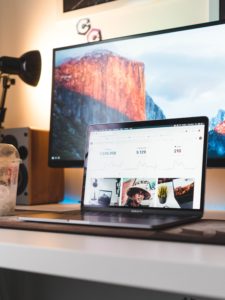Storytellers? Content creators? Entrepreneurs? Young college students? Advertisers? What is your immediate association with influencers?
Before the term influencers as we define it today, brands were using influencers regularly to raise awareness for their products. Influencers were the brand ambassadors, celebrities, the local cool kids in the market, etc. Starting around 2010, the definition as we know it today was launched. Many may not know this, but in 2010 we launched XOMAD as an innovative marketing agency exclusively working with the trendsetters of Facebook and blogs — the micro-influencers of the day. The first campaigns we worked on include launching with Blackberry and NIVEA experiential activations across the country.

Starting from 2011, makers of viral videos like Tessa Violet and Chuggaaconroy worked with Maker Studio and Next New Networks, who acted like Hollywood producers and advisors. After witnessing the success of these video bloggers, YouTube acquired Next New Networks in March 2011. The platform began to train their selected partners to generate quality content and monetized it through ads sales. YouTube believed that YouTube Star was a horrible name and saw the need to rebrand. Tim Shey, who was the co-founder of Next New Networks, identified these stars’ varied talents as producers, writers, community managers, and entrepreneurs. In creating the training program called Next New Creators program for independent YouTubers, Shey started to use the term creators as an overarching term to sum up all the roles that they encompass.

Another platform, Vine, is a short-video site that got shut down in 2017. It once attracted 200 million active users and was bought by Twitter for $30 million in 2012. However, it was overtaken by Instagram and showed consistent drops in user counts ever since Instagram introduced a video feature in 2013. As Instagram showed its ability to offer more breadth of services and even pay content creators to post on its platform, many stars that originated from Vine soon switched to Instagram. The elimination of Vine gave rise to Instagram as the biggest platform for social media stars. XOMAD saw this trend early on and started to work with Instagramers for projects such as Dove’s Sundance activations, the American Heart Association and more. By 2012, XOMAD was already using the term influencer to define Instagramers, Bloggers and other trendsetters.
As time passed by, influencers started to steer away from the term influencers as a hierarchy of content creators and influencers soon developed. Despite similarities, the term influencer was more looked down on because the name contains a transactional undertone. Many preferring the name content creators says they dislike being called influencers because people immediately associate the term with an “individual whose effect on the purchase decision is in some way significant or authoritative”. Many have also made a point that “influencing” should be seen as a byproduct of producing meaningful content, not the end goal.

However, younger people or newcomers to the social media landscape are more accepting of the term influencer. They find that identifying with the term can help them to attract brands’ attention and convince the brands that they have the marketing capabilities to sell products. While the terms influencer and content creator are also seen as platform-specific for Instagram and YouTube, respectively, using the word influencer also hints to potential clients that one does not merely post videos on YouTube.
Despite the debates over its name, statistics have solidly proven that influencer marketing is an economic powerhouse. The industry is on track to be worth up to $15 billion by 2022, with 187.5% expansion in just 3 years. The near-invisibility effect in influencer marketing is one of its biggest advantages and the essence of its success. Undoubtedly capturing attention with carefully curated photos and showcasing their attitudes towards living that generate natural fandom, influencers are the irreplaceable generator of awareness in the current economy of attention.

